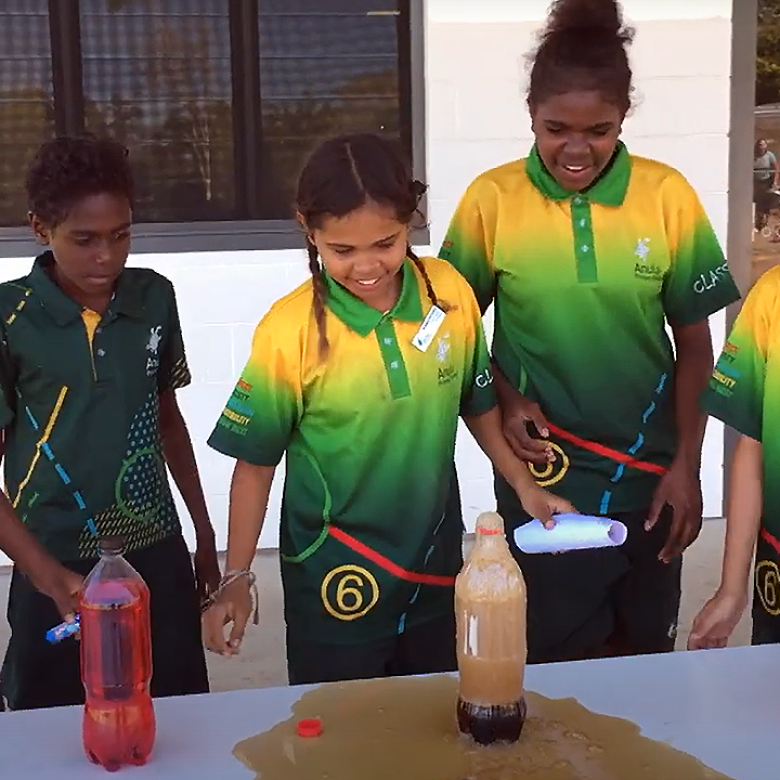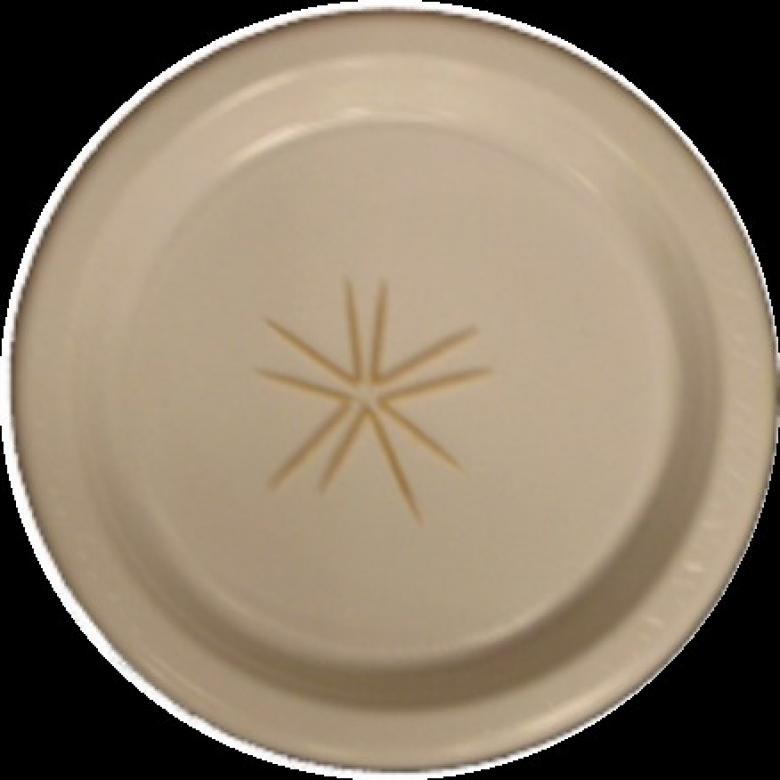You'll need
- 3 white pipe-cleaners
- A shallow container (like a plate)
- Scissors
- A ruler
- Cotton string or twine
- A heatproof container (like a coffee mug)
- Boiling water (ask an adult to boil water for you. Make sure there’s enough to half-fill the heatproof container)
- 375 g of Epsom salts (also called magnesium sulfate)
- A spoon
- A microwave
- A spatula
What to do
- Gather your materials on a flat surface.
- Twist the pipe-cleaners into a snowflake shape that will fit into the shallow container. You might need to cut the pipe-cleaners.
- Use the ruler and scissors to measure and cut 20 cm of string. Tie it to the end of one of the pipe-cleaners.
- Half-fill the heatproof container with boiling water.
- Pour a small amount of Epsom salts into the boiling water. Stir until completely dissolved. Keep stirring and adding Epsom salts until no more will dissolve.
- Microwave the solution on a high setting for 3 minutes. Be careful, the container will be very hot!
- Add more Epsom salts and carefully stir until it is dissolved. Keep stirring and adding Epsom salts until no more will dissolve.
- Lay your snowflake in the shallow container. Hang the end of the cotton string over the edge.
- Place the container somewhere it will not be disturbed.
- Carefully pour the Epsom salt solution into the shallow container until the snowflake is completely covered.
- Leave the container for 1 to 2 weeks, or until most of the water has evaporated. Check each day to see crystals forming.
- When most of the water has evaporated, carefully pick up your snowflake by the cotton string. You may need to carefully slide the spatula under the snowflake to help lift it. Hang the snowflake somewhere it won’t be disturbed as it dries.
- Once your snowflake is dry, it will be less fragile. You might like to hang it on your Christmas tree!
Questions to ask
Try making different crystals by using other salts (like table salt), or by using different materials to grow the crystals on. Which salts make the best crystals?
Which materials work best for growing crystals?
What happens if you add some food colouring?
What's happening
Crystals form when little bits of a substance (in this case, Epsom salts) arrange themselves in a regular pattern.
When you add a small amount of salt to water, the salt dissolves. If you keep adding salt, you will reach a point where no more salt will dissolve. This is called the saturation point. Warmer liquids have a higher saturation point, so heating the water lets you dissolve more salt than you can in cold water. When the solution cools down again, it cannot hold the extra salt, so the extra salt starts to turn solid again. It forms tiny solid salt crystals. As the solution cools, more salt turns solid. The crystals keep growing.
However, crystals need something solid to grow on – it is very hard for a salt crystal to form in a liquid. The tiny bristles on the pipe-cleaner are perfect for this, as are tiny cracks or scratches in the surface of the plate.
After the hot salt water is poured over the pipe-cleaners, the water starts to evaporate. This means that there is less water in the container, and the liquid can hold even less dissolved salt than before. This causes even more salt crystals to form on the pipe-cleaners and on the plate. As the water keeps evaporating, the crystals keep growing.
Different salts make different-shaped crystals. Epsom salt crystals usually form long spikes. If the crystals form quickly, you will have lots of small spikes on your snowflake. If the crystals form slowly, you may find longer and larger crystals on your snowflake.
Did you know
We come across crystals countless times every day. You may have even eaten some crystals today! Table salt, sugar and ice are all types of crystals you can eat. A type of crystal you can’t eat is quartz, which is used in jewellery and in clocks to help keep time. Diamonds are crystals made from carbon. Carbon can also form a different kind of crystal called graphite, which is used for the lead inside your pencils. You even have tiny crystals in your ears (made from calcium carbonate) that help you keep balanced.








